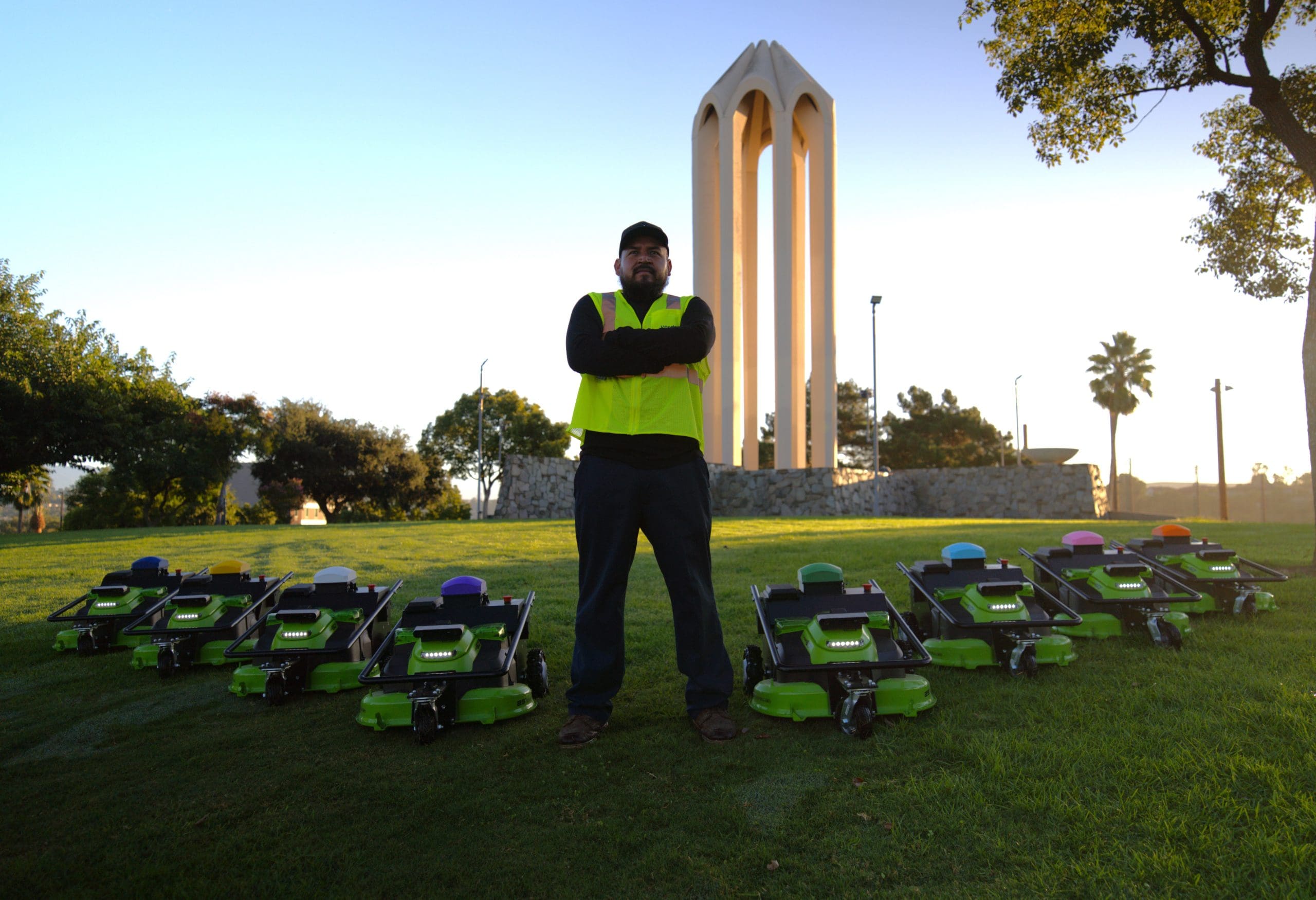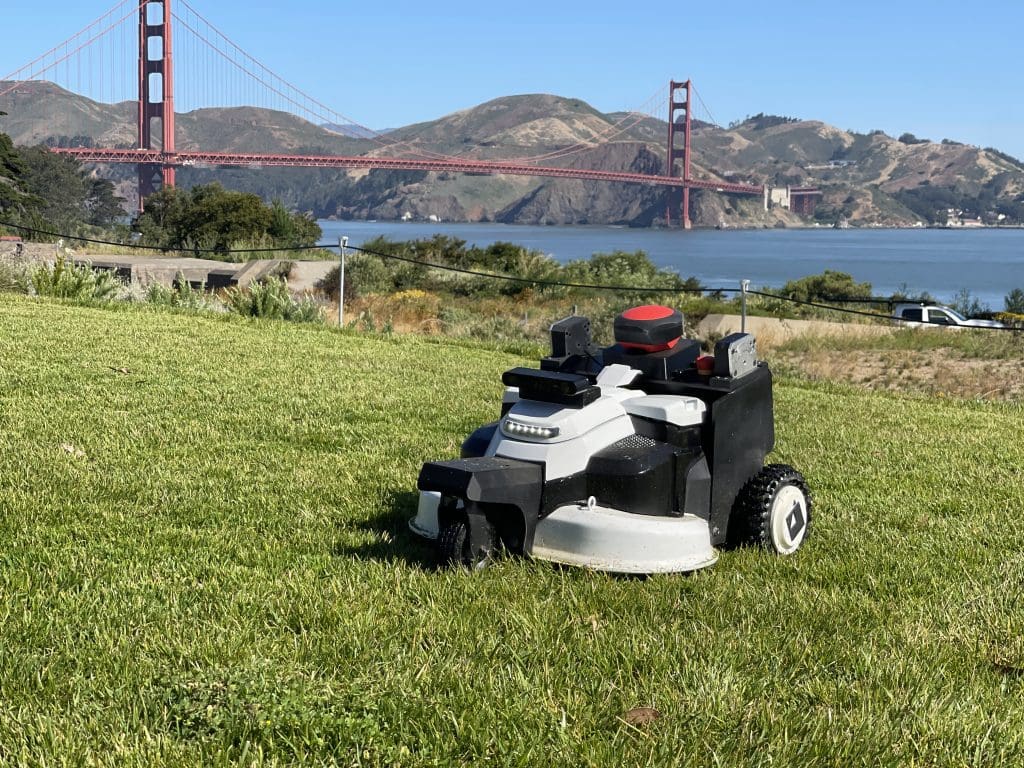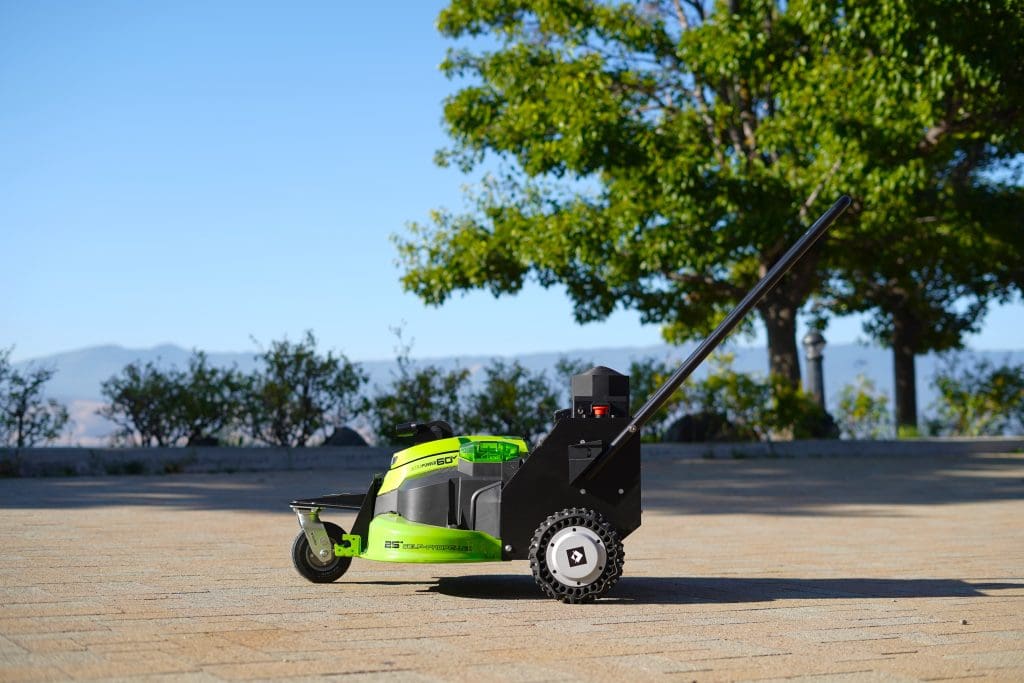
If you’ve been keeping up with the robotic mower market, you’ve probably heard of the brand, Electric Sheep Robotics, Inc., based in San Francisco, California. While the brand initially launched as a Robots-as-a-Service (RaaS) offering, they have now pivoted to become a large-scale outdoor maintenance company powered by artificial intelligence and robotics.
“We’ve spent the past four years really serving this industry and making their challenges our own,” says Jarrett Herold, co-founder and COO of Electric Sheep. “Now they very literally are.”
Herold says the reasons they decided to make this change were to be able to reinvent workflows from the inside out and to access unique data and reinforcement learning feedback from the field.
Electric Sheep is currently acquiring traditional outdoor service providers as part of their transition from manufacturing to a landscape maintenance company. The business has acquired four new companies with 500 automated turf sites this year. Herold says they can take advantage of progressive automation over time by operating within an already profitable business.
“We seek out well-run landscape businesses with a high percentage of maintenance revenue,” Herold says. “What is especially interesting is owner/operators who are interested in staying on board to run the business.”
Electric Sheep is looking for business in the top 50 metro areas with a high rate of growth and turf-heavy accounts.
How the Technology Works
Electric Sheep’s previous robotic model, Dexter, attached to new or existing mowers allowing them to mow autonomously. Landscape professionals would show the robot what to do one time and then Dexter could repeat those actions.

Their new robotic mower, the Ram, requires no setup or engineer on site. Herold says one of their design principles was they didn’t want to have any user interface through apps or screens.
“We’ve built the Ram to be used just like any other tool in the crew’s fleet,” Herold says. “You can show up to any piece of turf, anywhere in the world, set it down in the direction you’d like it to mow and hit the start button. It will begin striping and use machine learning to identify the natural boundaries of the turf area, without fail.”
Electric Sheep is able to do this through their own AI model for outdoor work called ES1. Herold says it is like their version of ChatGPT, but rather than predicting the next string of text to follow a language prompt, ES1 can predict the right physical response given the sensor inputs from the surrounding environment thanks to Electric Sheep’s Large World Model (LWM).
“We use deep learning to solve autonomy, eliminating costly robotic stacks that need intricate mapping and rules,” Herold says. “The result is a data-driven algorithmic solution that thinks like a brain, continually learning from experience to maintain outdoor spaces in any environment, even new places, without needing training.”
The Ram can reason on its own and adapt to changing environments. Herold says that over time, they will train the AI model with the edge cases they encounter while running their maintenance operations.
“Our mowers get deployed and have the opportunity to take on more and more work, with added responsibility as they learn,” Herold says. “Once one learns, they all internalize that learning.”
If a robot encounters one of the situations outside of the norm, Electric Sheep can simulate different variations to accelerate learning in the virtual world. An example is when one of their robots thought there was an obstacle in front of it due to sun glare.
“At night, when it was plugged in, charging and uploading all that it learned overnight,” Herold says. “We were able to take that exact scenario and run some 10,000+ simulations with slightly different variations of sun intensity, angle, within different mowing environments. This all goes to ‘train’ how ES1 thinks and behaves in the real world. So, the next morning, every robot in our fleet, which is operated by ES1 will be able to better navigate those exact scenarios. We do this every day/night and this is what makes our data engine.”
Electric Sheep’s mower will also go around obstacles as it encounters them and backtrack to mow missed areas at the end of its program.
Current Operations
Unlike other robotic mower offerings, the Ram is not limited to properties with wide-open expanses of turf. Thanks to machine learning, their robotic mower can navigate around obstacles anywhere.
“What creates an added complication for the large format mowers out there is that in order to justify the overall cost of the robot, it has to be mowing 20+ acres a day and those acres must look a certain way,” Herold says. “That is way too limiting to make a meaningful difference in any one landscape business.”
Herold says initially, they are deploying a one-person mow, blow and trim crew. This person drives a van with eight 25” electric autonomous mowers, all-electric handheld equipment and a large-format electric mower. He says this allows the operator to maximize manual mowing output while the robots do their thing.
“Typically, they’re only putting out as many mowers as they need to put out that they’re not waiting for them,” Herold says. “Pretty often, there’s enough other work, even in just trimming, edging and blowing that you don’t need to put a crazy amount of mowers down.”

He says this is the least disruptive way to deploy their initial rollout. Once they’ve created strong “pull” within the organization, they will incorporate the robots with 3-man full-service crews. Crews can work on horticulturally-focused tasks like pruning, plant health activities and customer service. Herold says that the robots allow crews more time to focus on what’s front and center to property owners/tenants.
Herold says there is so much more to automation than meets the eye. He says they are figuring out all the infrastructure, workflows and teams that need to be built around these robotic mowers to maximize the amount of value you can extract from this type of technology.
“We had to figure out how do you load and mount eight robots in a van so that it doesn’t take a guy 45 minutes to take them out,” Herold says.
Electric Sheep provides competitive bids on their maintenance contracts and their full electrification has been a major selling point in new sales conversations.
“We’re also building and deploying a suite of software tools in addition to robot automation,” Herold says. “This all makes us less sensitive to labor availability and H-2B than a traditional landscape service provider. Our customers are recognizing this and it has allowed us to drive organic growth at a different rate than the rest of the industry. We are offering a differentiated service along multiple fronts that new and existing customers are responding strongly to.”
Plans for the Future
Electric Sheep plans to grow an industry-leading landscape business, reaching $1 billion in revenue. Herold says they have a very clear path toward making this revenue amount through acquisition. He expects they can reach that in the next three to four years, but he says the first couple of steps are the harder part.
He says down the line, they could sell their robotic mowers to other companies as well.
“What we do is so much more than a product, and we’re eager to show this through not just the tools we’re building, but the systems and team structures around them, workflows, sales/growth motions, and the culture of the businesses we’re acquiring and running,” Herold says. “This is what’s really required to build a landscaping company at scale, with double the net margins and pace of organic growth.”
View one of Electric Sheep’s one-man crews in action below.


